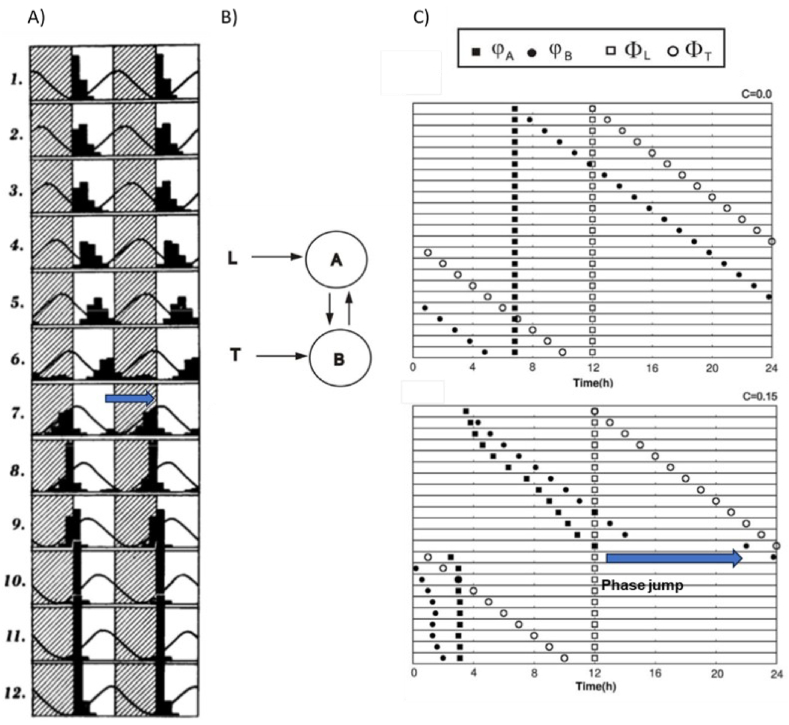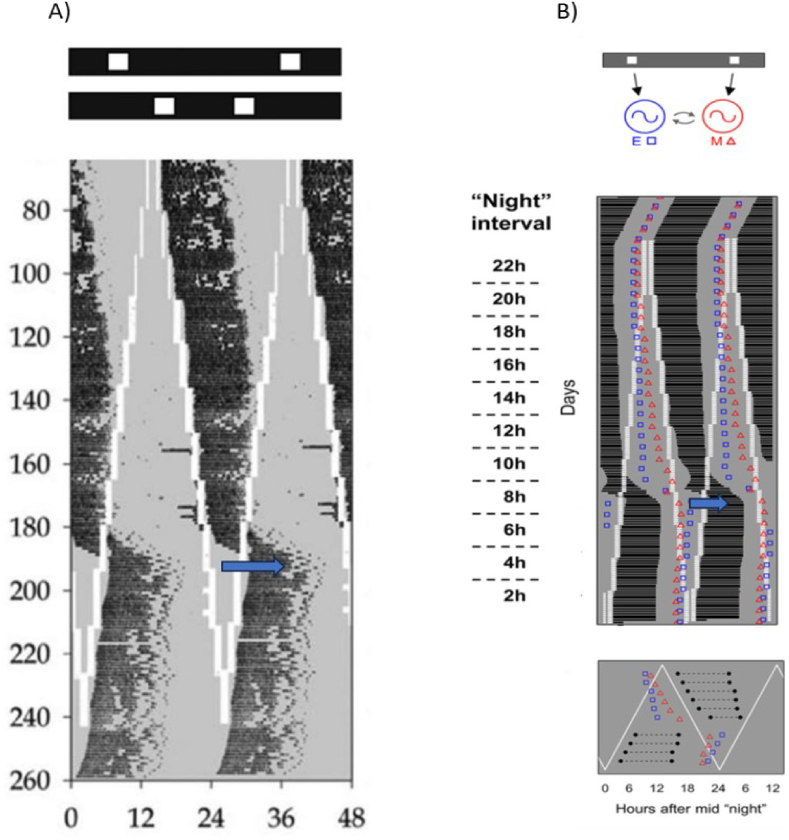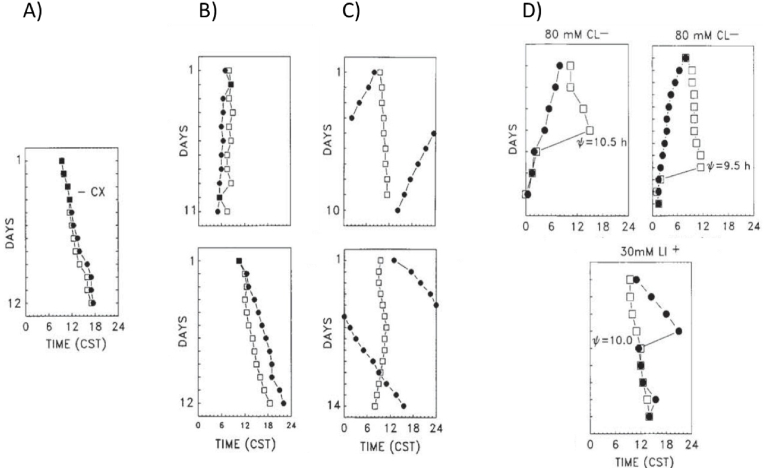一个有趣又难以捉摸的双耦合振荡器问题。
Q2 Medicine
引用次数: 0
摘要
时间生物学实验经常揭示有趣的非线性现象,这需要数学模型和计算机模拟来解释。这里展示了一个例子,其中两个位于软体动物Bulla gouldiana眼睛的昼夜节律振荡器被分离并在体外测量。Page和Nalovic(1992)通过将一只眼睛保持在控制条件下,并操纵另一只眼睛的周期,得到了与弱耦合和周期差异相关的多种结果,包括同步眼和非同步眼。然而,有一部分眼睛的相位角增加,然后是相位跳跃。在更复杂的系统中,两个授时基因起着明确的夹带作用,这种情况会发生,并且已经得到了令人满意的模型。然而,对一个简单的自由运行模型的模拟,两个相互耦合的极限环振荡器,振荡器周期单向变化,完全不能再现这些相位跳变。在这里,我们解释了在两个授时子系统中相跃是如何产生的,然后展示了最接近但不令人满意的适合于Bulla系统的中间模型。本文章由计算机程序翻译,如有差异,请以英文原文为准。



One interesting and elusive two-coupled oscillator problem
Chronobiology experiments often reveal intriguing non-linear phenomena, which require mathematical models and computer simulations for their interpretation. One example is shown here, where the two circadian oscillators located in the eyes of the mollusk Bulla gouldiana were isolated and measured in vitro. By maintaining one eye under control conditions and manipulating the period of the second eye, Page and Nalovic (1992) obtained a diversity of results, including synchronized and desynchronized eyes, associated to weak coupling and period differences. A subset of eye pairs, however, showed increasing phase angle followed by phase jumps. These occur and have been satisfactorily modeled in more complex systems where two zeitgebers play clear entraining roles. However, simulations of a simple model of free-running, two mutually coupled limit-cycle oscillators with unilateral change in oscillator period failed completely to reproduce these phase jumps. Here we explain how phase jumps arise in two-zeitgeber systems and then show the closest but unsatisfying, intermediate model that was fit to the Bulla system.
求助全文
通过发布文献求助,成功后即可免费获取论文全文。
去求助
来源期刊

Neurobiology of Sleep and Circadian Rhythms
Neuroscience-Behavioral Neuroscience
CiteScore
4.50
自引率
0.00%
发文量
9
审稿时长
69 days
期刊介绍:
Neurobiology of Sleep and Circadian Rhythms is a multidisciplinary journal for the publication of original research and review articles on basic and translational research into sleep and circadian rhythms. The journal focuses on topics covering the mechanisms of sleep/wake and circadian regulation from molecular to systems level, and on the functional consequences of sleep and circadian disruption. A key aim of the journal is the translation of basic research findings to understand and treat sleep and circadian disorders. Topics include, but are not limited to: Basic and translational research, Molecular mechanisms, Genetics and epigenetics, Inflammation and immunology, Memory and learning, Neurological and neurodegenerative diseases, Neuropsychopharmacology and neuroendocrinology, Behavioral sleep and circadian disorders, Shiftwork, Social jetlag.
 求助内容:
求助内容: 应助结果提醒方式:
应助结果提醒方式:


